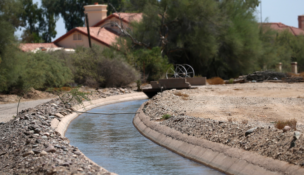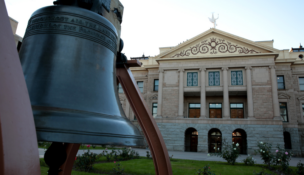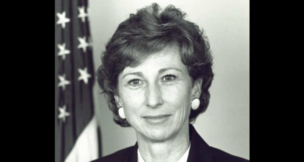Top 10 issues
Arizona Capitol Reports Staff//January 18, 2008//[read_meter]
Education
The issue:
An economic picture that seems to be getting worse at every turn means lawmakers will feel increased pressure to cut spending wherever they can. And while funding of Arizona schools is largely protected by voter mandates, programs begun or expanded in recent years — such as funding aimed at hiring more math and science teachers — may be on the chopping block.
School districts are also bracing for what will be a large financial hit to many districts in July 2009, when state funding for excess utility costs disappears. The provision was part of the 2001 Proposition 301, which mandated per-student spending by the state.
Main players:
While Gov. Janet Napolitano has said she won’t agree to any cuts in education, Republican lawmakers seeking to solve much of the budget crunch with spending cuts will insist on slashing some education programs. Superintendent of Public Instruction Tom Horne undoubtedly will be instrumental in determining which, if any, educational expenditures will be on the table for reduction.
House Majority Leader Tom Boone will be the catalyst for any excess utility legislation, as he has been very candid about the need for school districts to reduce energy costs in preparation of the funds disappearing. In 2006, he proposed a new model for school financing that incorporated an excess utilities plan. Though it did not pass, Boone may revisit the issue again this year.
What’s expected:
Republican lawmakers and Napolitano will clash over proposed cuts to the Department of Education. Whether any are adopted will be determined by the state’s economic outlook in February or March and if Napolitano and legislators can come to terms on budget cuts to other departments.
On the excess utilities front, it is unknown if there will be much of a push to address the issue this year, despite the drop-dead date for the funding drawing ever closer. With lawmakers focused intently on the budget in light of the shortfall, there may not be a legislative will to deal with such a complicated issue.
Immigration
The issue:
Think employer sanctions was the last word in the Arizona Legislature’s crusade against illegal immigration? Think again. Immigration hard-liner Mesa Rep. Russell Pearce, R-18, has said he will attempt to put several immigration-related measures on the 2008 ballot, including proposals that would do the following: deny birth certificates to babies born in Arizona if the parents are here illegally; allow courts to convict illegal immigrants of trespassing; require proof of legal status to register a vehicle.
The Legislature may not be done with employer sanctions, either. House Speaker Jim Weiers formed a special panel of business representatives in the interim to identify problems with the law. The report produced by the committee will certainly lead some legislators to sponsor bills that would change the law and make it more business-friendly.
Main players:
Pearce will continue to be the lightning rod for immigration-related issues. He will spearhead the efforts, along with allies Fountain Hills Rep. John Kavanagh, R-8, Lake Havasu City Sen. Ron Gould, R-3, and Mesa Sen. Karen Johnson, R-18.
As the architect of the law last year, Pearce also will be a key player in the employer sanctions debate. He has said he won’t tolerate any attempts to weaken the law, but he does intend to offer his own alterations to it, including adding language to the statute that would try to close the day-labor market.
What’s expected:
Pearce hopes to put each of his immigration issues on the ballot in order to avoid certain vetoes from the governor. But Pearce may find tough sledding, as he has lost credibility in some pro-business Republican circles for his handling of the employer sanctions legislation last session. Specifically, some lawmakers feel they were hoodwinked by Pearce, who reportedly guaranteed the brakes would be put on a signature-gathering effort to put a tougher measure on the ballot and that businesses would only face penalties for illegal workers hired after the law went into effect earlier this month.
The ballot drive is going strong — organizers expect to collect the required number of signatures by May — and Pearce is now saying the law will apply to illegal workers hired before the law went into effect. But some lawmakers have openly said they regret voting to approve the measure, while others are privately calling for House leaders to limit Pearce’s power in the upcoming session.
What ultimately happens with the employer sanctions law will be determined by a number of factors. House Speaker Jim Weiers will determine what committees will deliberate any proposed changes. If all sanctions bills go to Pearce’s Appropriations Committee, it’s likely that few, if any, will see the light of day.
Deficit
The issue:
The budget passed in late June relied on revenue estimates that have proven woefully inadequate, as the state has come in far below projections for the first six months of the fiscal year. The Joint Legislative Budget Committee has forecasted the state will be in an almost $1 billion hole when the fiscal year concludes and expects the deficit for the 2009 fiscal year, which begins July 1, to approach $2 billion.
Although some lawmakers called for a special session to address the shortfall during the interim, no official action was taken. Appropriations committees began meeting Jan. 8 to get a head start on identifying budget cuts, but Republican lawmakers and Gov. Janet Napolitano are approaching the problem from different sides. While Republicans — including the chairs of both Appropriations committees — said the most appropriate way to solve the shortfall is through permanent spending cuts, Napolitano has proposed a mixture of cuts, dipping into the Rainy Day fund and borrowing for capital projects.
Main players:
An agreement to amend the fiscal year 2008 budget will come when Napolitano strikes a deal with Senate President Tim Bee of Tucson and House Speaker Jim Weiers of north Phoenix. The legislative leaders, in turn, will have to convince members of their caucuses to support the plan.
What’s expected:
Napolitano has said she will call the Legislature into a special session when an accord has been reached. The special session would run concurrent with the regular session, to pass the needed legislation. It’s not clear when that will happen or what the nature of the deal will be.
It can be assumed, however, that the deal will be reached relatively quickly, as lawmakers expect a solution to be more elusive as the session drags on. It likely will be a compromise between Napolitano’s plan and the no-borrowing plan put forth by lawmakers before the session began. As a practical matter, it will be nearly impossible to trim $1 billion from the budget — even with fund sweeps and accounting gimmicks — when half the fiscal year has elapsed. Look for the final product to include some borrowing and some utilization of the Rainy Day fund.
Power struggles
The issue:
Both caucuses in the House are showing signs of crumbling under the pressure of the 2006 elections, though for different reasons. Last year, House Republicans were left with six fewer seats than in 2006, and suddenly they were struggling to appease both the conservative and moderate wings of the caucus. Democrats, meanwhile, bickered amongst themselves over committee assignments and allegations that leaders retaliated against members who supported the losing side in a pre-session leadership election.
After the Senate and Gov. Janet Napolitano struck a budget deal in May, House Republicans began to grumble that House Speaker Jim Weiers and Majority Leader Tom Boone of Peoria weren’t at the negotiating table. That grumbling became public criticism after a tax-cut-heavy
budget crafted by House Republican leaders was virtually ignored by the Senate and Napolitano and the final budget included only token measures from the House plan.
In the wake of what many Republicans in the House felt was a grievous tactical error by their leaders, more than two-thirds of the caucus — all but the leaders and a handful of veteran lawmakers and moderate Republicans — voted against all or parts of the spending plan. Almost immediately, talk began of installing a new leadership team, to be fronted by relative newcomer Kirk Adams of Mesa.
House Democrats started the session with a bang when Linda Lopez of Tucson and Pete Rios of Hayden, both former members of caucus leadership who narrowly lost elections before the session to remain leaders, went to Weiers on behalf of four other Democrats who were upset about their committee assignments. When Weiers interceded and changed the committee rosters to appease the disgruntled Democrats, minority caucus leaders became enraged and spoke out against Weiers and their fellow Democrats on the House floor.
Later in the session, Lopez and Rios both circumvented Democratic leaders negotiating a budget, opting instead to deal with Weiers and amending the House Republican budget to include some priorities important to Democrats, reportedly at the price of guaranteeing their votes on the final budget.
Main players:
Weiers is undoubtedly in the hot seat. Not only will he face a stiff challenge for re-election to his District 10 seat in the fall, but his future as leader of the House is in jeopardy. Rumors have persisted that Adams, R-19, would seek a leadership post, but he has yet to make any public statements about such a move.
Senate President Tim Bee and Napolitano worked in harmony last session, meeting early and often about the budget and hammering out a compromise by mid-May. With a mounting deficit, they will be under pressure to work as well this year, even though Bee is expected to challenge U.S. Rep. Gabrielle Giffords, a Democrat, in the 8th Congressional District this fall.
Despite assurances all is well in the House Democratic caucus, Lopes still is leading a split group. Many of the newcomers were elected with his help, and as such, are firmly in his camp. But much of the old guard still sides with Lopez and Rios, and Lopes will need to repair the damaged relationships to prevent public displays of animosity.
What’s expected:
Given the obvious discontent Republicans had with Weiers at the end of last session, it is not hard to believe the winds of change are blowing. Whether a challenge to his authority is real or merely perceived, his decisions will be viewed through a prism by those who think he is responding to a potential challenge from Adams.
And there also may be a tug-of-war between Weiers and Bee. Bee’s decision to work with Napolitano from the outset was in direct contradiction to Weiers’ strategy in past years of passing a budget the governor won’t sign and then negotiating a compromise directly with her. Given the nearly $1 billion deficit the state is facing for the current fiscal year, and the differing solutions posed by Republican lawmakers and Napolitano, the stage is set for conflict.
Although the schism among House Democrats is troubling for those who hope to increase Democratic control at the Capitol, its practical effect during the legislative session will be minimal. At the end of the day, even if the split is publicly exposed again, Democrats are going to stand together to support the governor and oppose the Republican policies they feel harm the state.
Child Protective Services
The issue:
A highly-publicized hearing last year into the deaths of three Arizona children and the Child Protective Services produced several ideas for legislation this session. Tucson Rep. Jonathan Paton, R-30, who, together with Mesa Rep. Kirk Adams, R-19, has been doggedly pursuing the subject, said he expects some of the most impassioned debates to center on this. On another front, a state senator frustrated at the wait to adopt a child out of the state’s foster care system said she plans to introduce legislation to cut that waiting time.
Main players:
The main players will be Paton and Adams; Tucson Rep. Pete Hershberger, R-26, and Sedona Sen. Tom O’Halleran, R-1, co-chairs of the Arizona Children’s Caucus; and Glendale Sen. Linda Gray, R-10, who is also pushing for more transparency in court hearings. In August, Gray facilitated a press briefing by a Virginia-based group that assailed the state for taking too many children away from their families, overwhelming social workers with too many cases and unnecessarily exposing kids to the trauma of a “toxic intervention,” such as placing them in foster care.
What’s expected:
Paton has identified five problem areas that need reform and potential legislative action:
• Recruitment and retention of caseworkers. Paton said caseworkers are leaving but salaries do not seem to be the problem. He said pay was high enough, according to CPS data, leading him to believe there are “morale and management” issues that need to be fixed.
• A lack of accountability and transparency. The representative said this is probably the “biggest” problem area. “The bottom line is,” he said, “we would not even be having this debate if we did not get the records on the Payne or Williams’ cases released.” He said there is a need for more transparency in two key areas: In cases where children die or are in immediate danger, and in disciplinary actions against state employees.
• A lack of communication between CPS and law enforcement. Paton said 5-year-old Brandon Williams would be alive today if a deputy sheriff had known CPS was looking for him. There must be a mechanism by which officers know that a child is suspected of being in imminent danger if they come across his or her family, he said.
• A lack of investigative power. Paton said he was astonished that CPS had searched for Brandon Williams for weeks and couldn't find him, but that a law enforcer found his mother, Diane Marsh, after her father filed a missing-persons report on her. Paton said CPS did not have the power to get a motel manager to tell them what room they were staying in, but the Sherriff's Office easily obtained the information from an insurance company.
• The huge number of children, between 400 and 700, who go missing under the CPS’ radar. Paton said CPS cannot find these children so their cases have been closed. “CPS admits they only react to information that is given to them. That means no one is actively trying to find those kids,” he said. “What keeps me up at night is that some of those kids really are being abused, but some might just be dead — just like Brandon, Tyler and Ariana,” he said.
On another topic, Phoenix Sen. Leah Landrum Taylor, D-16, said she is mulling legislation to streamline the process of adopting a child out of the state’s foster-care system. Landrum Taylor and her husband have been trying to adopt a child but have been frustrated by the wait. It’s too long, the state senator said. “As far as why, I wish I knew. I wish I had the answer. But I do know that I can see why anybody could get frustrated and say ‘forget it, we are going the private adoption route,’ or ‘we are going international because this is taking a very long time,’” she said in November.
Initiatives
The Issue:
Proposed ballot measures for the November 2008 general election.
Main players:
Citizens, proponents, checkbooks, consultants, courts, and lawmakers.
What’s expected:
Voters better widen their attention span if even a handful of the competing proposed constitutional amendments and initiatives qualify for the 2008 ballot.
And backers
of the proposals better reach out to contributors, volunteers and signature-gatherers, as it will take a lot of money, shouting and leg work to break through the noise of the year’s presidential, federal and state elections.
The topics of the efforts are diverse and numerous. Property taxing, redistricting, health-care coverage, and racial- and gender-preference programs are topping the current list of proposed amendments to the state Constitution.
Add to that campaigns to make cops enforce immigration law (Rep. Russell Pearce’s Support our Law Enforcement), to ban use of cell phones without a hands-free device while driving (Safer Road Arizona Act), to stop the issuing of payday loans (Rep. Marian McClure’s Stop Payday Loans), as well as competing measures to toughen or soften employer sanctions law targeting businesses that employ illegal immigrants (Don Goldwater’s Support Legal Workers Act, and Andrew Pacheco’s Stop Illegal Hiring, respectively).
In 2006, the Arizona Supreme Court ruled against opponents of hotly debated land-use and marriage proposals that sought to have the measures thrown off the ballot. The ruling may have signaled the court’s tiring of rituals of pre-election ballot-measure challenges, but terrified opponents of some of the 2008 proposals will have little to lose by trying.
Expect the threat of Goldwater’s stringent initiative to play a big role for legislators when they consider altering Pearce’s landmark employer sanctions bill. In 2006, ballot measures reacting to illegal immigration passed easily, and lawmakers will surely keep that in mind.
Various governments, departments, and agencies also will be under the gun when fighting proposed constitutional amendments (Arizona Tax Revolt, Prop. 13 Arizona) to roll back and cap property-tax evaluations.
And given the extreme difficulty required to amend passed initiatives, lawmakers will be more than a little anxious over the prospect of dealing with unforeseen consequences brought by the slew of proposed ballot measures.
That is, of course, if supporters of initiatives can collect the large amount of signatures necessary to qualify for the ballot. Backers must present 230,047 signatures by July in order to put amendments to the state’s Constitution on the ballot, while supporters of state law changes must submit 153,365 signatures.
Water
The issue:
After the Legislature last session adopted one of the most significant policy changes regarding water conservation since the 1980s, the discussion over the management of the state’s most precious resource is likely to shift to rural Arizona, places outside of “active management areas.”
The new law more strictly tied approval of new development to proof of adequate long-term water supply. Specifically, the law allows rural local governments to hinge their approval of new subdivisions on whether there will be enough water to support them for 100 years. Here’s the caveat: A county’s board of supervisors has to adopt the change unanimously. The question is, will they?
Main players:
Legislators known for their work on water over the years will take the lead over water-management discussions. They include O’Halleran and Arzberger, as well as Republican Sen. Jake Flake of Snowflake, and Prescott Rep. Lucy Mason, R-1. Those lawmakers generally agree on the need for improvement but have varying ideas how to go about it.
What’s expected:
In the Legislature, Sedona Sen. Tom O’Halleran, R-1, said he will introduce legislation that would allow the law to become effective with an approving vote by a majority of a board of supervisors — instead of a unanimous consent. O’Halleran tried but failed to achieve that last session.
“To give one person sole veto power over water management in an area just doesn’t make any sense,” he said recently.
Senate Minority Leader Marsha Arzberger of Willcox, author of the law, said she is willing to take part in more discussions about the contentious provision. But her support for any modification depends on what stakeholders have to say. In any case, there is likely going to be resistance to any effort to repeal the provision. Expect the real estate industry to be closely monitoring developments.
Meanwhile, O’Halleran also plans to introduce a measure that would require counties, cities and towns within a groundwater basin to meet every few years and discuss water-management issues on a more regional basis. Discussion over securing a dedicated fund for water-development grants at the local level will also continue.
A recurring regret last session was the failure to offer incentives to conserve or develop new supplies of water. With stubborn drought conditions in a desert setting that has seen exponential growth, water remains a priority concern for Arizona.
State Trust Land
The Issue:
What to do about state trust land is an issue that never seems to die. That’s in good part because everybody wants to make changes, but nobody has an answer that all parties can agree upon.
At the time it was granted statehood, Arizona received from the federal government more than 10 million acres, land that could be sold or leased largely to benefit K-12 education. Some 9.3 million acres remain. Conservationists such as the Nature Conservancy want to preserve more land for open space. Home builders want land on which to build, though they don’t object altogether to open space. Ranchers clash with environmental groups that want fewer cows and more wildlife. Education groups want to make sure any changes don’t shortchange the main beneficiaries — schools.
Change, in any case, would not be easy. It requires voters to amend the Arizona Constitution, as well as an act of Congress. So far, nobody has gotten past the first step. In 2006, voters turned down two trust-land measures. In 2007, Glendale Rep. John Nelson, R-12, sponsored a measure that identified some 280,000 acres of trust land for conservation. Though HCR2039 passed the House, it was stopped in the Senate.
Main Players:
Nelson has worked on trust-land changes for four years. Despite last year’s disappointment, he expects to back another constitutional measure this session. He acknowledges it will be difficult, once again, to craft a bill that pleases all lawmakers and stakeholders.
Gov. Janet Napolitano has sought to put her own stamp on the trust-land issue. She has met with Nelson and other lawmakers to craft a package.
“At the first meeting, there were generalities and a general consensus with the proviso that the devil’s in the details,” Nelson said.
Few disagree about the difficulty of setting aside trust land for open space. The Constitution states that Arizona must get the “highest and best value” for all trust land. In and near urban areas, that means competitive bidding, where developers can drive up the price. The land becomes too valuable to leave untouched. Nelson proposes to make land for conservation available to cities and even conservation groups at fair-market value. The proposal also would free up some $130 million that sits unused in the Arizona Preserve Initiative fund. It’s still accruing at a rate of $10 million a year.
The money was to be available as matching funds so cities could purchase trust lands identified for open space. But threat of a lawsuit halted the program.
As for trust-land reform, working out the devilish details could require a meeting of opposing minds. In 2006, the Nature Conservancy and the Home Builders Association of Central Arizona fought bitterly over Proposition 106, which would have set aside 694,000 acres for conservation. The Conservancy supported it. The measure lost by a narrow margin.
The association’s lobbyist, Spencer Kamps, said his group does indeed support setting aside trust for open spac
e. The home builders supported Nelson’s bill in 2007. Kamps will wait and see what the 2008 session brings.
Pat Graham, state director of Nature Conservancy, said making land available at fair-market value will be key to conservation. He added the State Land Department, which administers trust land, needs more funding.
What’s Expected:
Graham remains hopeful, as long as the governor and lawmakers are talking,
“We think there’s really an opportunity right now to try to get the state-trust land issue moving along,” Graham said.
Kamps, too, wants change. But he tempers optimism with past experience.
“I’ve been working at this for eight years,” he said. “You just can’t predict what’s going to happen with state lands. It’s sad but true.”
Transportation
The issue:
How to fund the construction of Arizona’s highways remains one of the most significant issues this year. Complicating it is the nearly $1 billion budget deficit facing lawmakers. The chairman of the Senate Transportation Committee fears “fund swaps,” with lawmakers raiding money intended for highway construction and putting it in the general fund. There are options on the table to try to keep up with the state’s highway construction demands. One of them is toll roads, a prospect that was discussed at various points throughout last session.
Main players:
Lake Havasu City Sen. Ron Gould and Gilbert Rep. Andy Biggs, R-22, chair of the House Transportation Committee; Peoria Sen. Robert Burns, R-9, and Mesa Rep. Russell Pearce, R-18, chairmen of the appropriations committees of the two chambers; majority and minority leadership of both houses, who will lead the budget negotiations; and ultimately, Gov. Janet Napolitano.
What’s expected:
Surprise Sen. Jack Harper, R-4, has proposed a toll road to be built to Prescott from the West Valley intersection of Loop 303 and 75th Avenue, a move that will add fuel to the discussion over the feasibility of toll roads as a way to decongest Arizona’s roads. Harper’s bill requires the Department of Transportation to issue a request for proposals (RFP) by the end of 2009 for a private entity to construct the toll road. The agency must award the contract by the end of 2010. Gould, chair of the Senate Transportation Committee, said he is likely to hear the bill.
Expect other bills advancing the idea of toll roads, but whether lawmakers will be more receptive to them remains to be seen. There were a couple of such bills introduced during the 2007 session. They were given hearings in committees but eventually went nowhere.
“In 2009, the federal highway trust fund is broke,” Gould said. “There is no money that’s going to be coming from the feds.”
Gould said that leaves the state with three alternatives: Continue with the gas tax-funded highway program, raise taxes, or opt for privation and toll roads. In an election year, Republicans are unlikely to put to the ballot any tax increase, he said. The only option may be toll roads. Another big issue is likely to be attempts to raid money that is supposed to go to the Highway User Revenue Fund, according to Gould.
“Apparently, they can raid the VLT (vehicle license tax) before it gets into the HURF fund,” he said. In fact, a recently released proposal to tackle the budget deficit by the House and Senate appropriations chairmen would shift $105 million in the Motor Vehicle Division’s fiscal year 2008 operating budget from the State Highway Fund to HURF. This impacts local governments, so expect them to fight for their anticipated HURF collections.
Health Care
The issue:
Legislators last session granted an $8 million partial bailout of Healthcare Group after learning the plan was $20 million in the red. The state-run program provides coverage to small-business employees unable to qualify or unable to afford private insurance.
The plan was meant to be self-supporting, with the premiums expected to sustain the costs of claims. But just the opposite has happened and the long-term health of the program, which provides coverage to about 25,000 people, is in danger.
On top of that, in her State of the State speech, Gov. Janet Napolitano called for expanding state employee health insurance to cover children up to age 25. She also urged that parents be allowed to purchase state-operated coverage for their children.
Main players:
It is expected that Mesa Rep. Kirk Adams, R-19, will attempt to replace the Healthcare Group model with a high-risk pool insurance plan for otherwise uninsurable residents. Private insurance companies would pay a capped amount of costs of claims and the state would assume the rest, according to his proposal, which is based on a program used in Idaho.
The idea is not without its detractors. Many Democrat legislators will oppose the changes, believing the dismantling of Healthcare Group to be a goal of private insurance companies and lawmakers opposed to government incursion into health care.
Instead of the plan to scrap Healthcare Group, it is likely Democrats will throw their support toward removing obstacles they believe limit the program’s enrollees, such as prohibitions on marketing the plan and requirements that people be uninsured for at least six months before becoming eligible.
That idea, they said, would have the effect of collecting more premiums to outweigh the costs of claims.
What’s expected:
Republicans could succeed at getting the high-risk pool plan passed through both chambers, though getting approval from the governor will be tough. Most likely, the proposal, which should split down party lines, will wind up being a bargaining chip during tense budget negotiations.
















